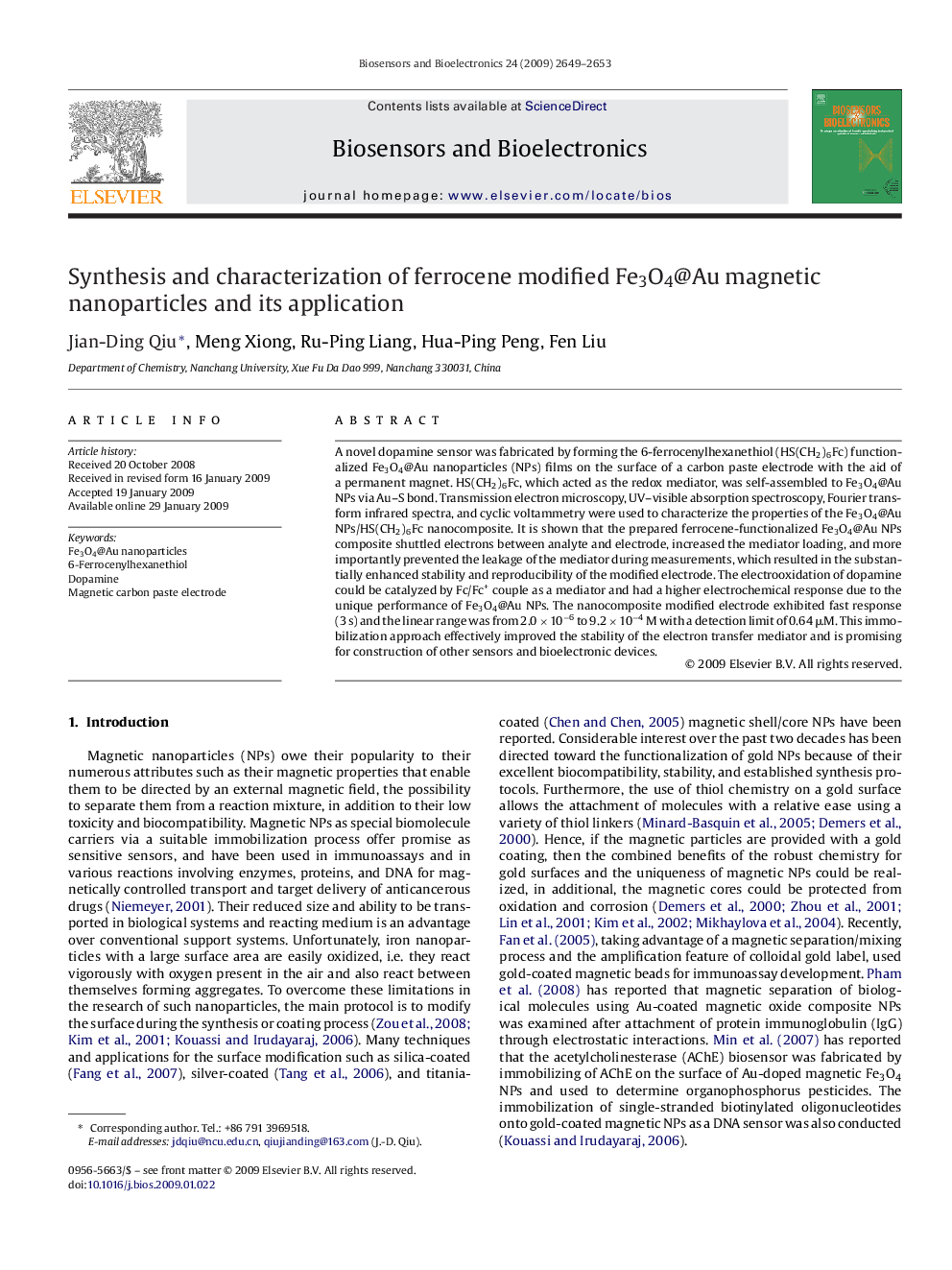| Article ID | Journal | Published Year | Pages | File Type |
|---|---|---|---|---|
| 868725 | Biosensors and Bioelectronics | 2009 | 5 Pages |
A novel dopamine sensor was fabricated by forming the 6-ferrocenylhexanethiol (HS(CH2)6Fc) functionalized Fe3O4@Au nanoparticles (NPs) films on the surface of a carbon paste electrode with the aid of a permanent magnet. HS(CH2)6Fc, which acted as the redox mediator, was self-assembled to Fe3O4@Au NPs via Au–S bond. Transmission electron microscopy, UV–visible absorption spectroscopy, Fourier transform infrared spectra, and cyclic voltammetry were used to characterize the properties of the Fe3O4@Au NPs/HS(CH2)6Fc nanocomposite. It is shown that the prepared ferrocene-functionalized Fe3O4@Au NPs composite shuttled electrons between analyte and electrode, increased the mediator loading, and more importantly prevented the leakage of the mediator during measurements, which resulted in the substantially enhanced stability and reproducibility of the modified electrode. The electrooxidation of dopamine could be catalyzed by Fc/Fc+ couple as a mediator and had a higher electrochemical response due to the unique performance of Fe3O4@Au NPs. The nanocomposite modified electrode exhibited fast response (3 s) and the linear range was from 2.0 × 10−6 to 9.2 × 10−4 M with a detection limit of 0.64 μM. This immobilization approach effectively improved the stability of the electron transfer mediator and is promising for construction of other sensors and bioelectronic devices.
